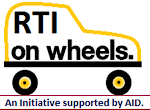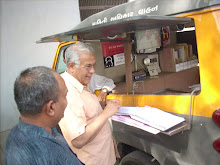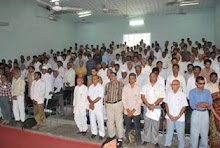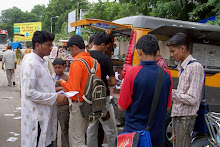The Tribune: National: Saturday, July 16, 2016.
The CIC
declared the six political parties as public authorities under the RTI Act
because they fulfilled the four conditions given in the definition of a public
authority under section 2(h) of the RTI Act.
KEEPING it
tight under the political hat (July 12, 2016) is actually old hat! In addition,
it is also a case of selective quotations. Referring to a decision the Central
Information Commission (CIC) gave “about three years back” (on June 3, 2016, to
be precise), the piece says: “As per this order, all the national political
parties have come under the ambit of the RTI Act.” Given that it later engages
in legal nuances, this statement is not really correct. It goes on to say that:
“The operating part is that ‘we hold that INC, BJP, CPI (M), CPI, NCP and BSP
have been substantially financed by the Central Government under Section 2(h)
(ii) of the RTI Act’.” The legal nuance is that the order held “INC, BJP, CPI
(M), CPI, NCP and BSP” to be whatever they are and not “all the national
political parties” to be whatever they were. The importance of this distinction
is that today, four of these political parties are not “national political
parties”, but they are still governed by the order.
The second
instance of verbal jugglery to say that the “operating part" of the order
is the one holding the six parties to "… have been substantially financed
by the Central Government.” It is true that is the part of first sentence of
para 92 of the order but the para ends with “…it is held that AICC/INC, BJP,
CPI(M), CPI, NCP and BSP are public authorities under section 2(h) of the RTI
Act.” I will leave it to the reader to judge whether the opening sentence of a
paragraph is the “operative part” or the closing sentence. Now comes the most
insidious part. And this requires a somewhat detailed explanation. The second
paragraph of the piece says, inter alia, “The operating part is that 'we hold
that INC, BJP, CPI (M), CPI, NCP and BSP have been substantially financed by
the Central Government under Section 2(h) (ii) of the RTI Act. The criticality
of the role being played by these political parties in our democratic set up
and the nature of duties performed by them also point towards their public
character, bringing them in the ambit of section 2(h). The presidents/general
secretaries of these political parties are hereby directed to designate CPIOs
and Appellate Authorities at their headquarters in six weeks time. The CPIOs so
appointed will respond to the RTI applications extracted in this order in four
weeks time'.”
The quotation
in the above paragraph has been crafted from paragraphs 92 and 93 of the CIC's
order.
While it is
not appropriate to guess the reasons for such deliberate omissions, one
possibility could be that mentioning the “The constitutional and legal
provisions discussed herein above" might not have gone well with
assertions such as "The observation of the CIC regarding the role of the
political parties is neither legal nor defined under RTI Act.”
The reality
is that the CIC declared the six political parties as public authorities under
the RTI Act because they fulfilled the four conditions given in the definition
of a public authority given under section 2(h) of the RTI Act. Being
“substantially financed” by the government is just one of those conditions.
Others are exercise of constitutional authority (under Schedule 10 of the
Constitution of India), the requirement of being registered under a “law made
by Parliament” (Section 29-A of the Representation of the People Act, 1951),
and the claim of working in and for public interest. It was the combined effect
of the four reasons that made the CIC declare the six parties as public
authorities. Now to the “old hat”. The bogey of the Supreme Court decision in
Civil Appeal no. 9017 (actually the Thalappalam Service Cooperative Bank ltd.
and others vs State of Kerala and others) has been raised often. Suffice it to
say that this decision does not apply to political parties at all because it
has been given specially in the context of cooperative societies. The glaring
difference between cooperative societies and political parties is that the
former are constitutional bodies and the latter are not. Cooperative societies
have been specifically included in the Constitution under the Constitutional
(97th Amendment) Act, 2011, which received the assent of the President on
12.01.2012, notified in the Gazette of India on 13.01.2012 and came into force
on 15.02.2012. The 97th Amendment also amended Article 19(1)(c) of the
Constitution, to make joining cooperative societies a fundamental right of all
citizens. Cooperative societies also find mention in Articles 43-B, and 243ZH
to 243ZT of the Constitution. In addition, they are listed as a state subject,
in entry 32 of list I of the Seventh Schedule of the Constitution of India. How
one wishes the same level of attention had been given to political parties in
the Constitution!
Continuing
with the bogey of the “Supreme Court decision in Civil Appeal no. 9017”, the
same decision also says in Para 51, well after discussing the substantial
funding issue,”All the same, if there is any dispute on facts as to whether a
particular Society is a public authority or not, the State Information
Commission can examine the same and find out whether the Society in question
satisfies the test laid in this judgment.” Applying this logic to political
parties will require examination of the case of each political party, and that
is exactly what the CIC did before it came to its 2013 decision.
And finally,
the same Supreme Court decision says, in para 53, that if “the larger public
interest justifies the disclosure of such information,” the Registrar of
Cooperative Societies should disclose that information with “reasons (being)
recorded in writing.”
The question
now arises that even IF one accepts the contention that: “The observation of
the CIC regarding the role of the political parties is neither legal nor defined
under RTI Act” put forward in the Keeping it tight under the political hat
piece, what would be possible remedies for political parties affected by the
June 03, 2013 decision of the CIC? Two options suggest themselves. They could
request the CIC to review its decision or they could approach the courts to
declare the decision null and void. It is worth pointing out that the affected
political parties did not do anything at all and merely ignored the CIC's
decision. The original petitioners have now moved the Supreme Court for
implementation of the CIC's decision. It is now up to the Supreme Court to
decide if the law of the land applies to political parties or not.
(The
writer is a former Professor, Dean &
Director in charge of the IIM, Ahmedabad.)














































































